Intel Meteor Lake has arrived: Here’s what these new ‘AI laptops’ can do
Here's our first real taste of that the new Intel Meteor Lake chips can do
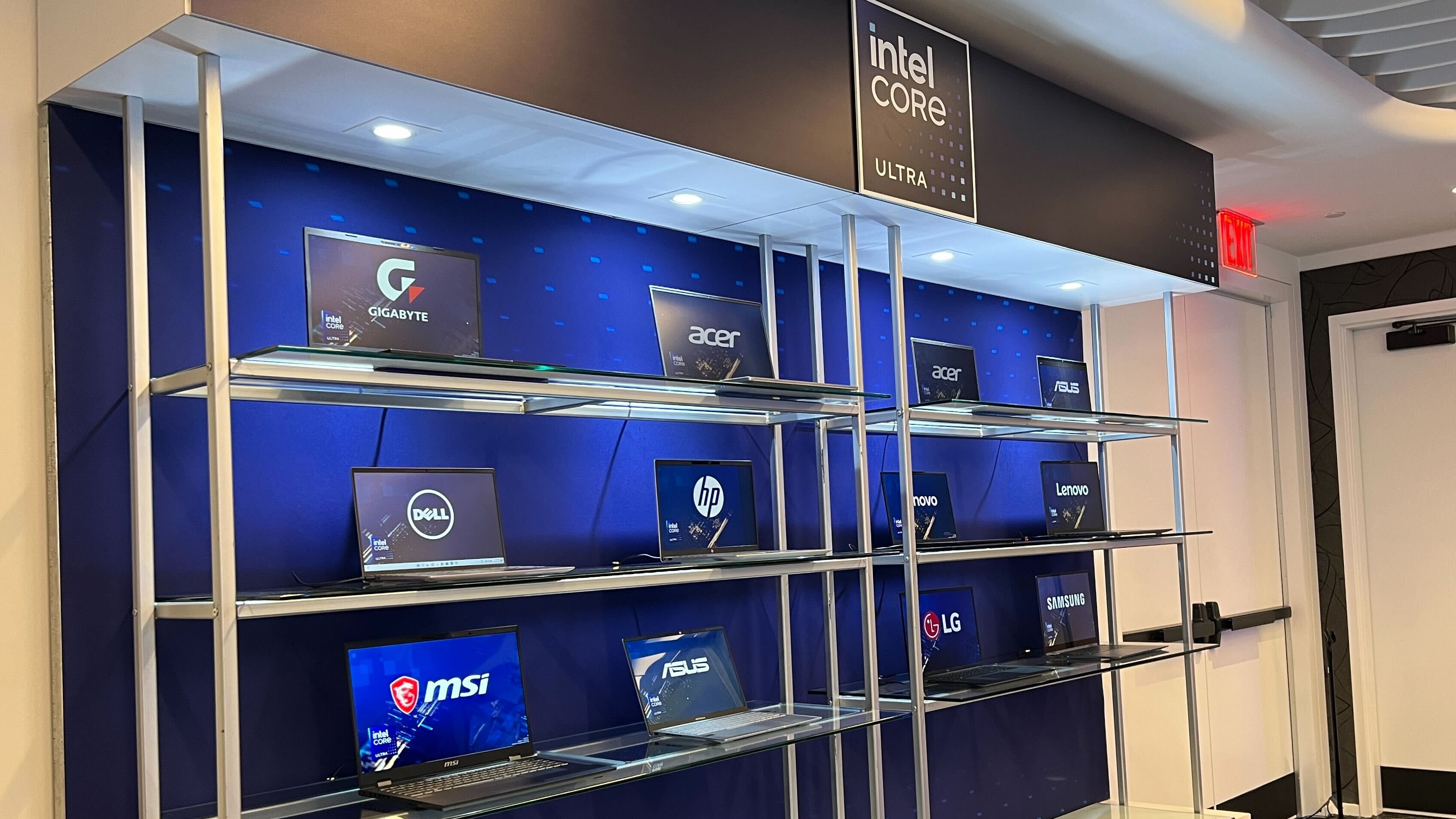
The race to inject artificial intelligence into everything we do with technology shows no signs of slowing, and this week, Intel took a leading role with the unveiling of its new AI-focused 14th Gen laptop chips, codenamed Meteor Lake.
The chips were unveiled on Thursday (Dec. 14) during a live-streamed event in NYC, and you can see what it was like to be in the room watching it unfold live by checking out our Intel Meteor Lake live blog recap.
What's so intriguing about these new Intel Meteor Lake chips — technically branded 14th Gen Intel Core or Intel Core Ultra, depending on power level — is their new design. It basically stacks smaller self-contained "chiplets" together using Intel's Foveros packaging tech to make a single chip composed of discrete chiplets that can be individually powered on and off.
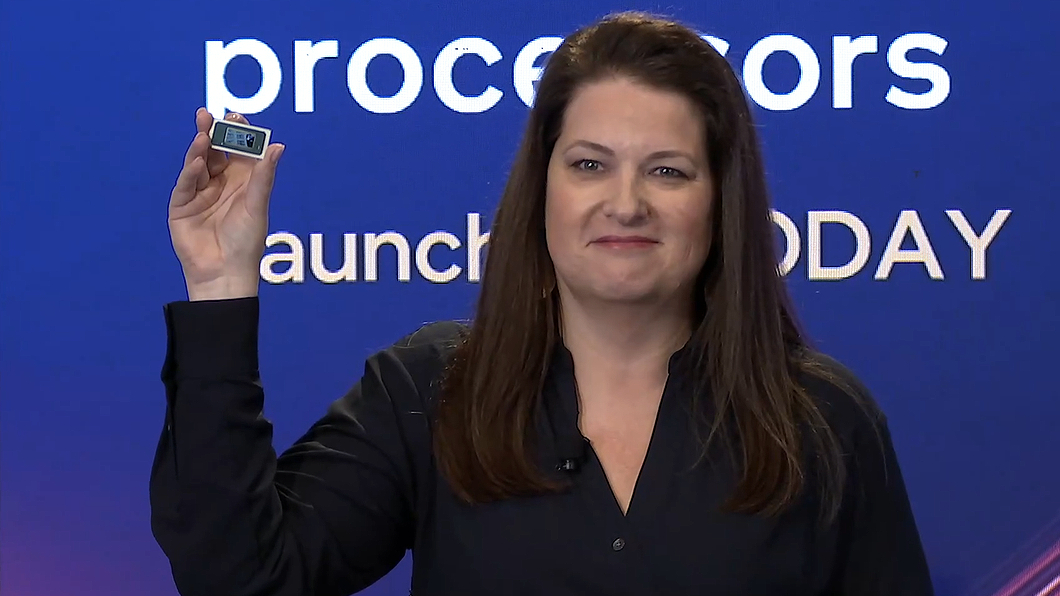
Intel isn't the first chipmaker to take this approach. (AMD is already on a similar fabrication scheme, as is Apple.) But these are the first Intel chips to feature this chiplet design, and they do have something no other Intel laptop chip has had until now — an NPU (or Neural Processing Unit) and an island of low-power cores optimized to do the kind of algorithmic work we now bundle under the "AI" label. Think machine learning, speech recognition, blurring your background in video calls, and so on.
So when Intel promotes these new Meteor Lake-powered laptops as "AI laptops," what they're trying to convey is that these laptops have a special processor dedicated to the kind of work that AI tasks often demand.
That's important because before now, running such workloads on an Intel-powered laptop would require the CPU (and onboard GPU, if it exists) to do the computational work of, say, generating the background blur on your Zoom call. But with a Meteor Lake laptop, that work can be offloaded to the NPU, freeing up your CPU and GPU to do other things.
The NPU can also work in tandem with the CPU and GPU portions of the Meteor Lake chips to complete these AI tasks even faster than if either portion was doing it solo, leading to performance improvements over current laptops that Intel is keen to tout.
Sign up to get the BEST of Tom's Guide direct to your inbox.
Get instant access to breaking news, the hottest reviews, great deals and helpful tips.
Until now it's been hard to parse exactly how much of a difference these new chips will make in our day-to-day computing. But this week, we finally got a chance to go hands-on with some laptops packing the latest Meteor Lake silicon in addition to an early look at advance demos of software that takes advantage of the NPU in these new chips.
This is just a glimpse of the kind of support we're expecting to roll out for these "AI laptops" in the year ahead, if for no other reason than PC sales have slumped in the past few years and manufacturers are likely eager to entice people into buying new laptops. To give you a better sense of whether these new AI-focused Meteor Lake chips are worth your attention, here's a rundown of all the different things we've seen them do so far.
Run large language models locally
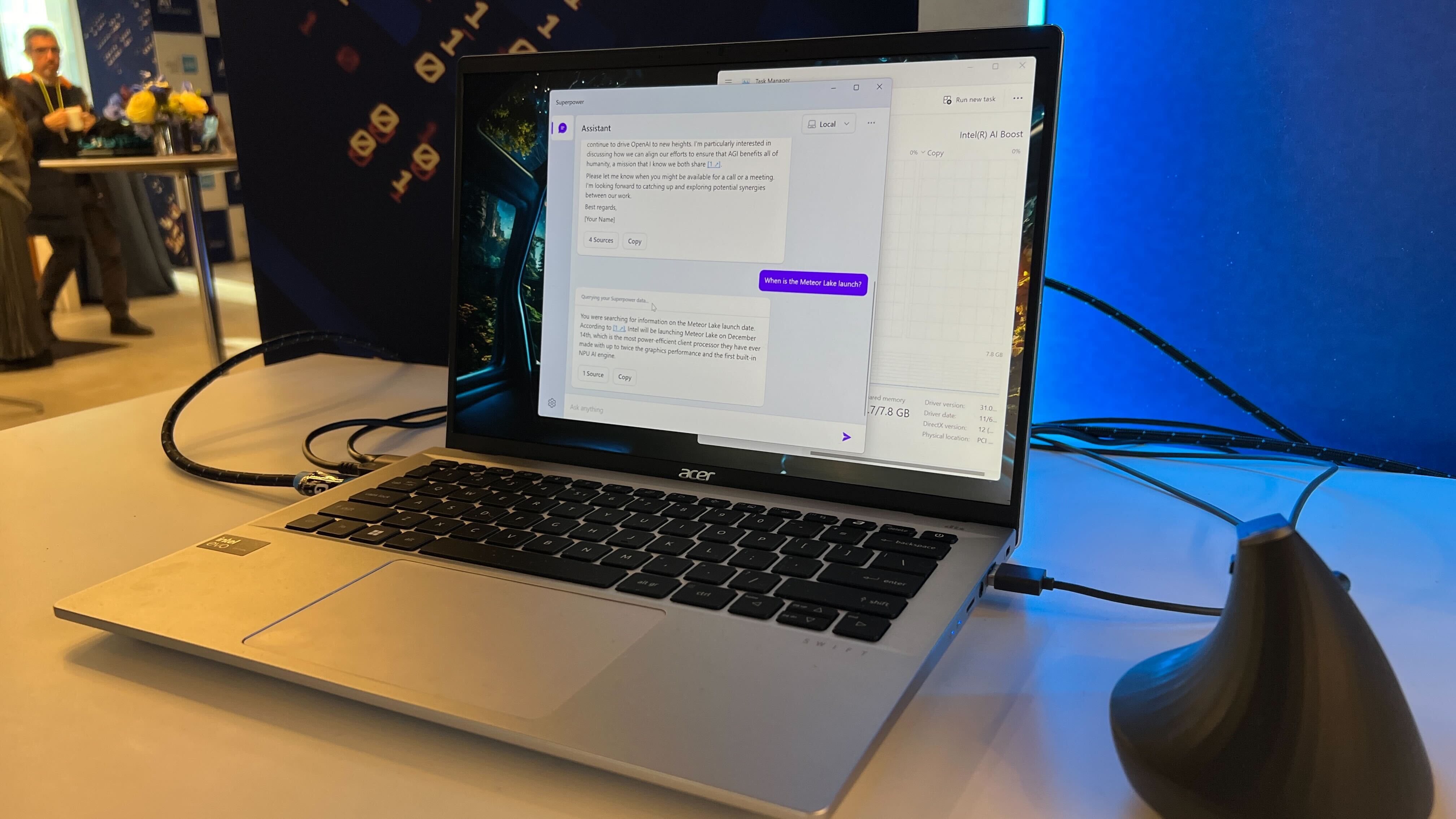
One of the use cases I was most curious to see was a Meteor Lake laptop running an LLM like Google Bard locally, entirely on the laptop, without ever having to access the Internet at all.
And while we haven't yet seen Bard running locally, we have now seen Meta's LLaMA 2 running in a local instance on a Meteor Lake laptop at the Intel event. As you can see from the above photo above snapped during Intel's event, the AI assistant is able to answer questions and execute tasks while running in Local mode on the laptop.
This could be huge for folks who like using these tools because running them locally on your laptop frees you from having to pay or wait to access them, gives you more privacy (since you're not dialing out to the Internet) and could also give you more control over how these tools work.
Windows Copilot is the most exciting use case for this kind of on-device AI work, since I'd love to see what Microsoft's AI assistant can do for Windows 11 when it's not hamstrung by relying on Bing for so many responses. Sadly, while Windows Copilot was mentioned as one of the big features supported by these new Intel Core Ultra processors, we have yet to see it running locally anywhere.
Support and speed up AI features in software
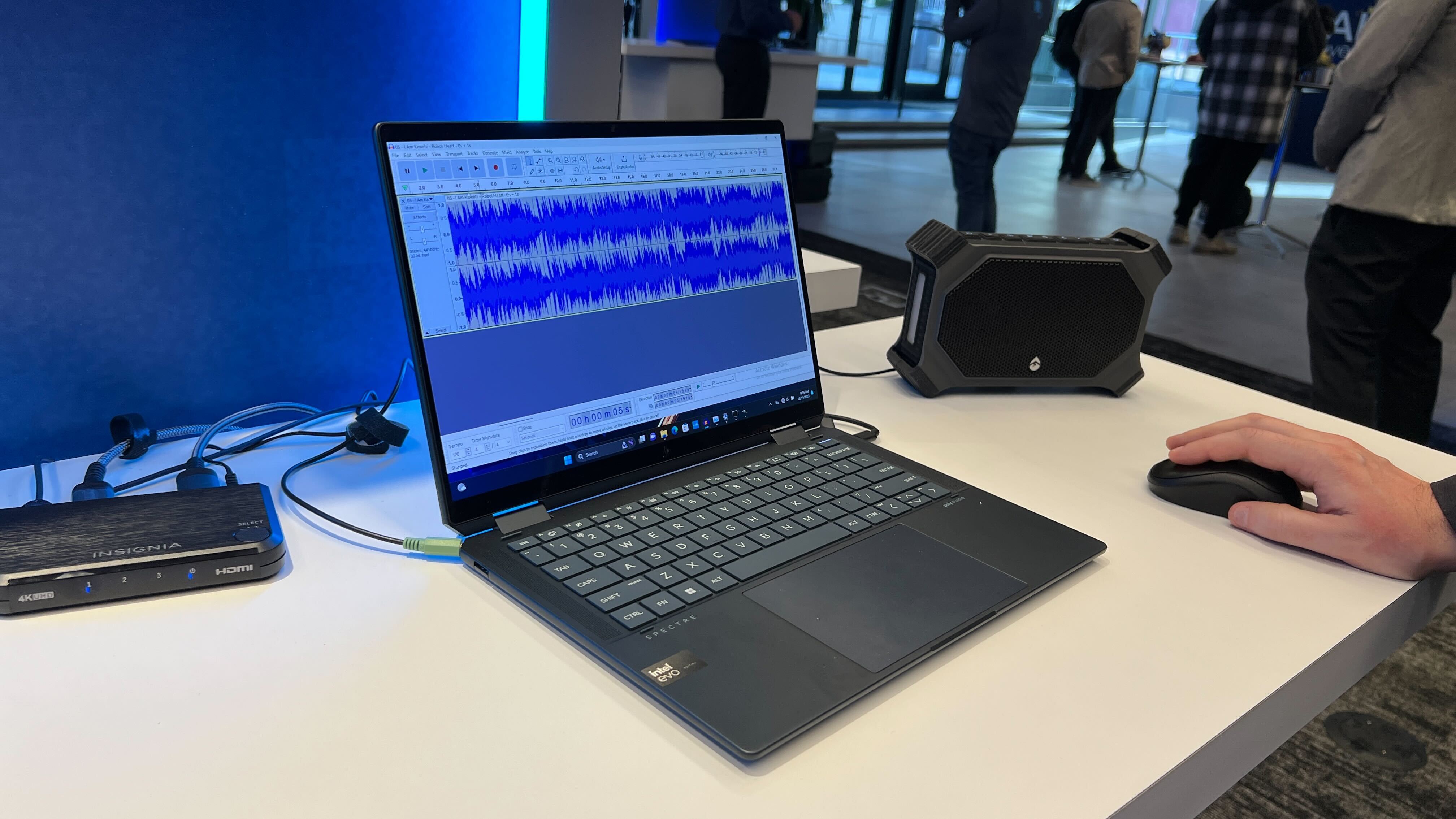
You may have noticed some companies squeezing AI features into their software in 2023, and that's only going to become more popular in 2024 as these laptops roll out and competitors like AMD, Apple and Qualcomm talk up how their own NPU-equipped chips support the latest and greatest AI features in your favorite programs.
And now that we've had a chance to see how well they work when powered by Intel's latest chipset, I'm starting to get excited about how this tech will change the way we live in 2024 and beyond. As shown in the photo above, we've now seen common free tools like Audacity and GIMP updated to feature new AI features that can tap an NPU to more efficiently do things like strip out background audio in a recording, or filter swear words out of your latest podcast episode before it goes live.
Improve your video calls
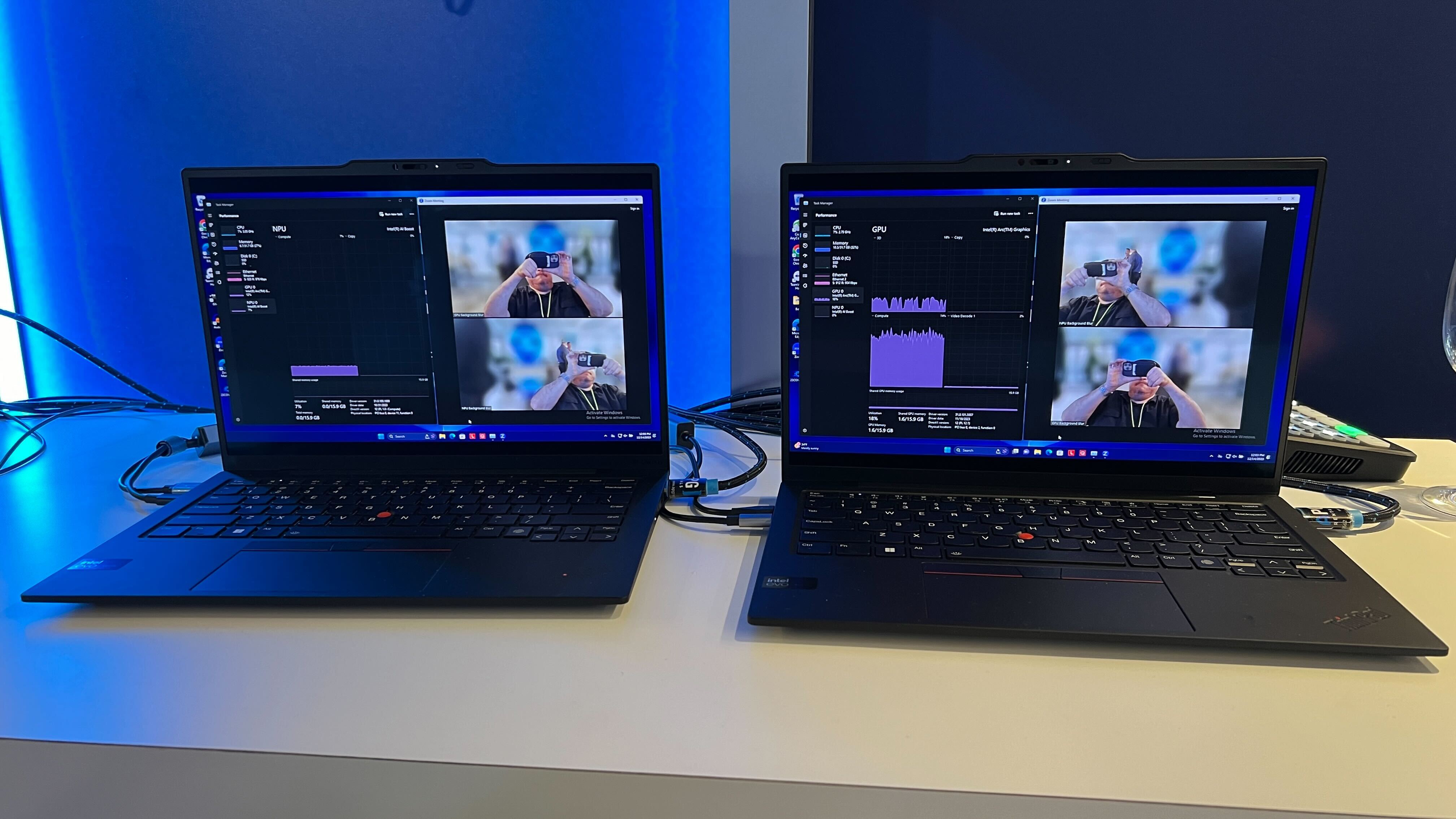
This is hardly the most exciting aspect of Intel's Meteor Lake chips or the "AI laptop" future we've been promised, but it is one of the clearest examples of how everyone's experience of using laptops will change with Meteor Lake.
That's because Windows Studio Effects is one of the first instances where we can clearly see how the NPU in Meteor Lake chips works to free up the rest of your system from having to do onerous tasks like blur your background during your weekly Zoom calls.
Windows Studio Effects, if you're not familiar, is a relatively new package of features for enhancing video calls that you can access right from your Windows 11 taskbar. They're basically meant to catch up to what Apple silicon is doing in MacBooks and iPads to pull off tricks like automatically framing and centering you in the shot, auto-blurring your background and more.
As you can see from the photo above, Intel set up a demo station to with two ends of a Zoom call running to showcase the difference between using Windows Studio Effects on your GPU vs. the new NPU.
While both are capable of doing the work, you can click to zoom in on the photo above and see that when the NPU is handling the background blur, it's using a lot less computational power than the GPU, as well as less actual electric power. So while this isn't going to enable any totally new videoconferencing experiences (at least, in the short term), these new Meteor Lake chips should make having video calls and using effects a little easier and less taxing on your laptop's resources.
I'm not saying you should expect to sneak in a little gaming time during boring Zoom calls, but this advancement does make that seem a lot more reasonable on a laptop than it did last year.
Run games better (with integrated Arc graphics)
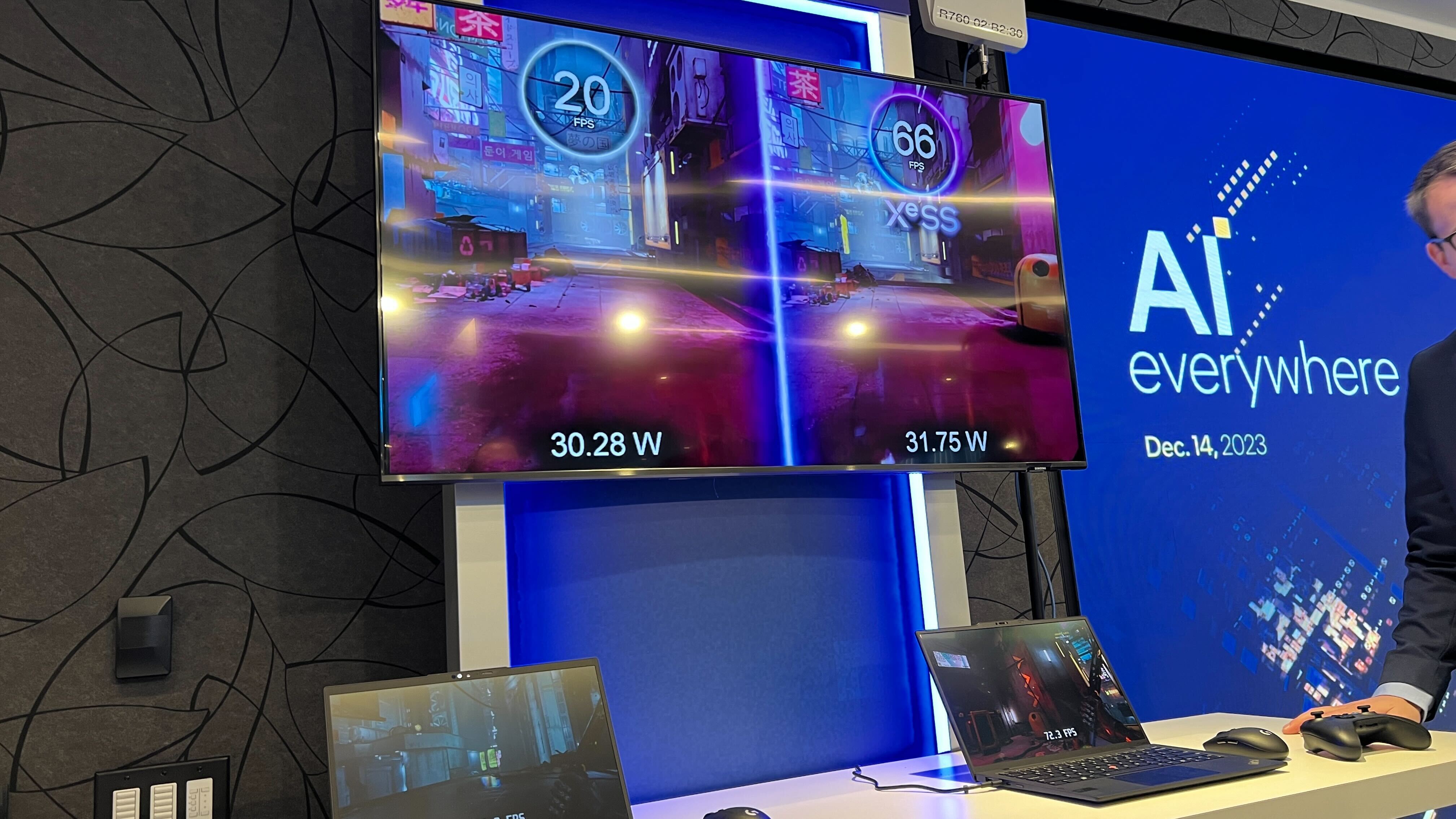
Speaking of games, that's another key area where Intel is promising a significant improvement in Intel Core Ultra chips vs. prior generations.
That's backed up by the improvements Intel has made to the integrated GPU on these new Meteor Lake chips, some of which are more powerful integrated Arc GPUs that bear the same branding (and pack some of the same tech) as the discrete Intel Arc graphics cards which debuted in 2022. You can see a demo unit on the right in the photo above running the new Ghostrunner 2 game on an Intel Meteor Lake Core Ultra 7 chip, while the laptop on the left is running it on an older Intel 13th Gen Raptor Lake Core i7 chip.
Click to zoom in and you'll notice the Meteor Lake laptop is hitting roughly 3x the framerate (frames per second) of its predecessor while running the same game. This is happening part because the laptop on the right has a high-end Meteor Lake chip with the new integrated Intel Arc graphics onboard, and it has enhanced support for upscaling tech like Intel XeSS.
I've seen this firsthand in my Acer Swift Go 14 hands-on, where I was able to play games like Ghostrunner 2 and Like A Dragon Gaiden: The Man Who Erased His Name on the peppy little ultraportable with nothing more than an Intel Core Ultra 7 chip onboard. And while they didn't run amazingly, I saw decent framerates oscillating between 20-60 fps when running both games at medium to low settings.
That should allow you to enjoy games a bit more on these new chips without worrying about having a beefy discrete GPU weighing down your laptop.
However, there's an important caveat to this performance upgrade: Only the high-end Meteor Lake chips get the improved integrated Intel Arcs graphics chipset. Specifically, we're talking about Meteor Lake chips that end with the letter H — these are the more expensive, more powerful high-end Meteor Lake chips for high-performance laptops.
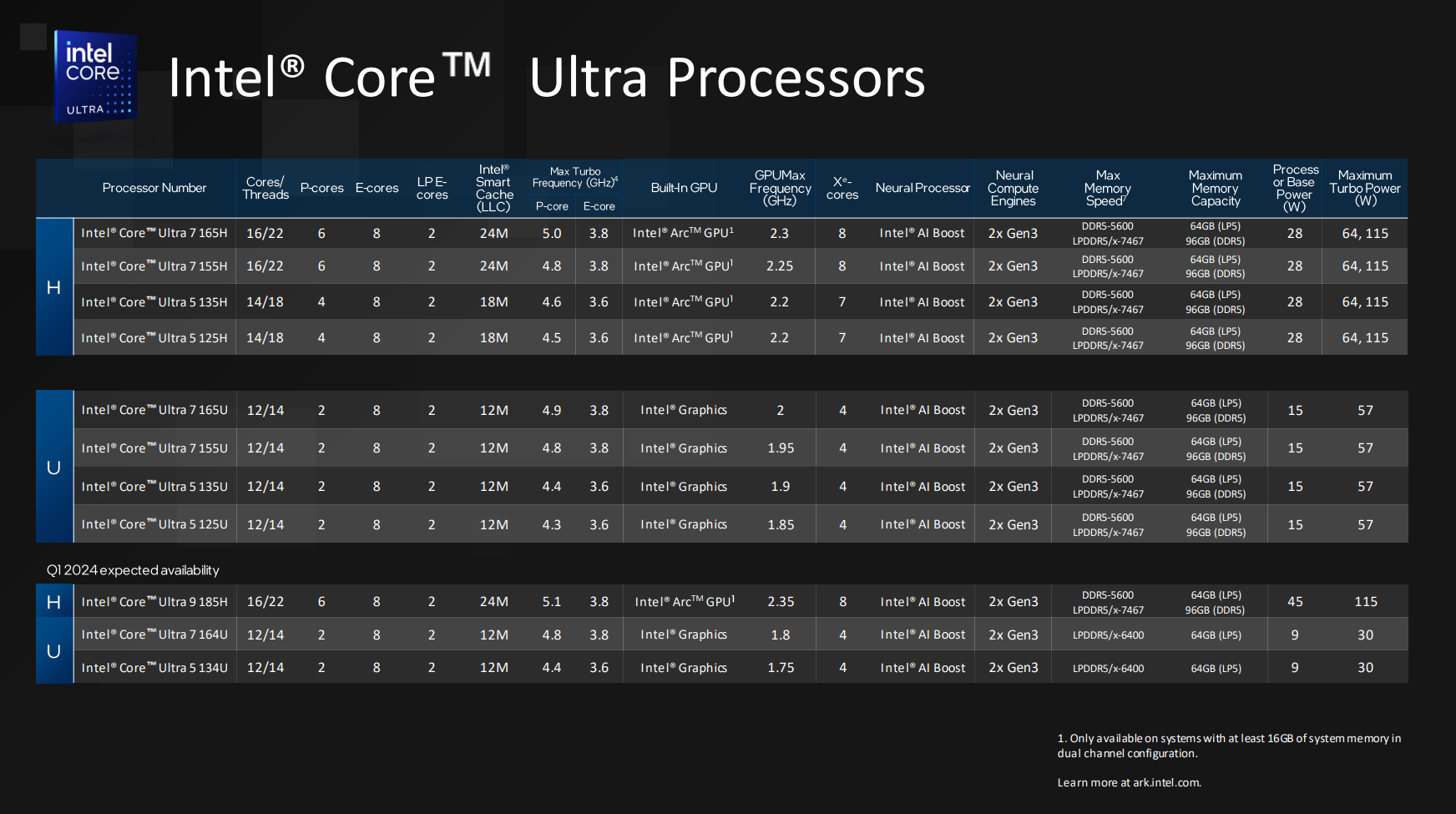
There's also a second set of weaker Meteor Lake chips launching this week that end in U, rather than H. These chips don't get the Intel Arc graphics upgrade, and sport less capable Intel Graphics GPUs.
So if you're counting on taking full advantage of the new Arc-infused on-chip GPUs in these new Meteor Lake chips, make sure you check to make sure the laptop you're buying packs an Intel Core Ultra chip with Arc branding and an H at the end before you buy!
...and more?
As you may have noticed, Intel has a lot of vague promises about how Meteor Lake will revolutionize your day-to-day computing but few practical examples to showcase right now.
That's important to keep in mind as you get ready for the deluge of "AI laptops" we're about to start drowning in — this tech is real and AI is coming whether we like it or not, but it's not really here yet in a meaningful way. I've spent nearly a week with a Meteor Lake laptop, and if you hadn't told me what was inside, I'd never have known.
But I don't think that will last for long. As you can see from the photos above, hardware and software vendors are already racing to find ways to use these NPUs and the technologies they excel at in their products and services.
While better video calls, easier content creation, faster AI workflows and better gaming (at least, on select Intel Arc-enhanced Meteor Lake chips) are all benefits these chips can deliver right now, by mid-2024 I expect we'll see a bumper crop of AI-enhanced utilities that may well start a seismic shift in the way you use your laptop.
Who knows, maybe this time next year I'll be brewing my morning coffee while speaking to Windows Copilot and asking it to read me my to-do items for the day. Then I could sit down for a work meeting where my onboard transcription program is keeping track of what everyone says when, reference it while recording my podcast (which is scheduled, recorded, transcribed and published by AI), then ask my laptop to generate some compelling promos for the podcast (using real quotes, of course) that I can use to promote it on social networks. Heck, maybe I'll just ask an AI to promote the finished product using its best judgment as to when and where to post what.
That's nothing like my life right now of course, and frankly it's not a future I personally want to live in. But I bet a lot of other people would, and it's exactly the kind of future Intel is trying to grab hold of and monetize for all it's worth with these new Meteor Lake chips. So get ready to hear a lot more about AI in 2024.
More from Tom's Guide

Alex Wawro is a lifelong tech and games enthusiast with more than a decade of experience covering both for outlets like Game Developer, Black Hat, and PC World magazine. A lifelong PC builder, he currently serves as a senior editor at Tom's Guide covering all things computing, from laptops and desktops to keyboards and mice.
